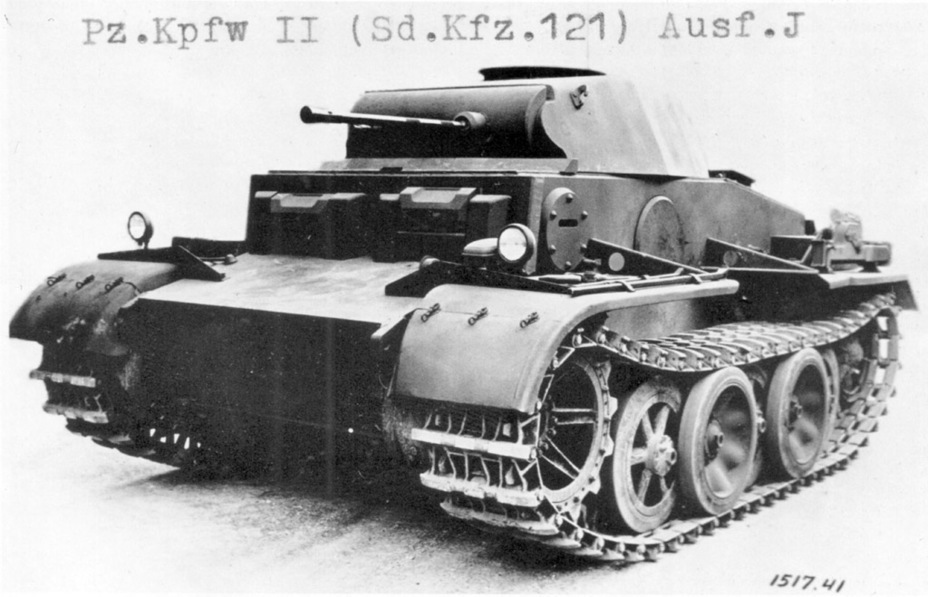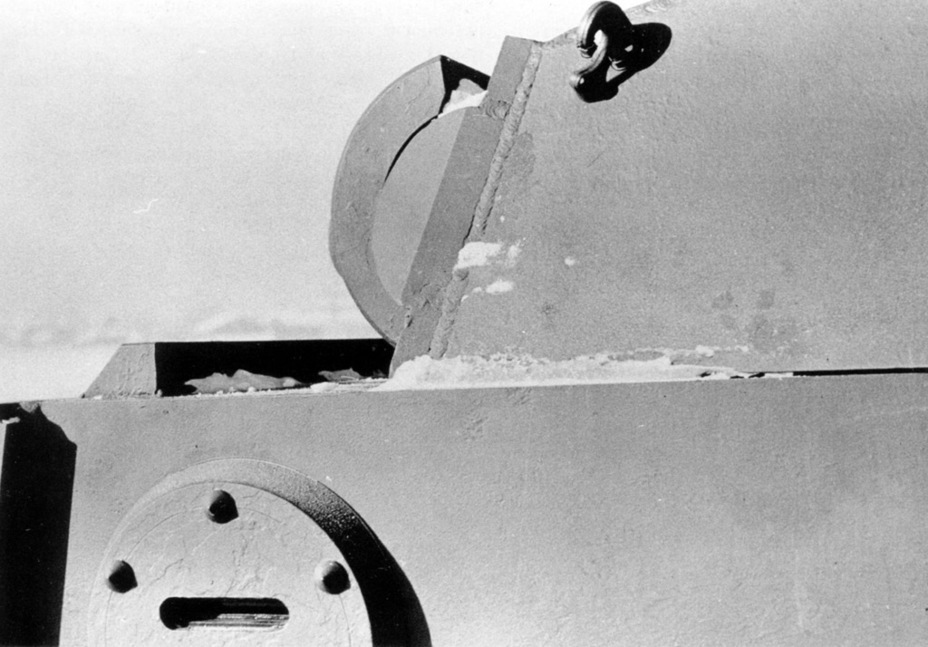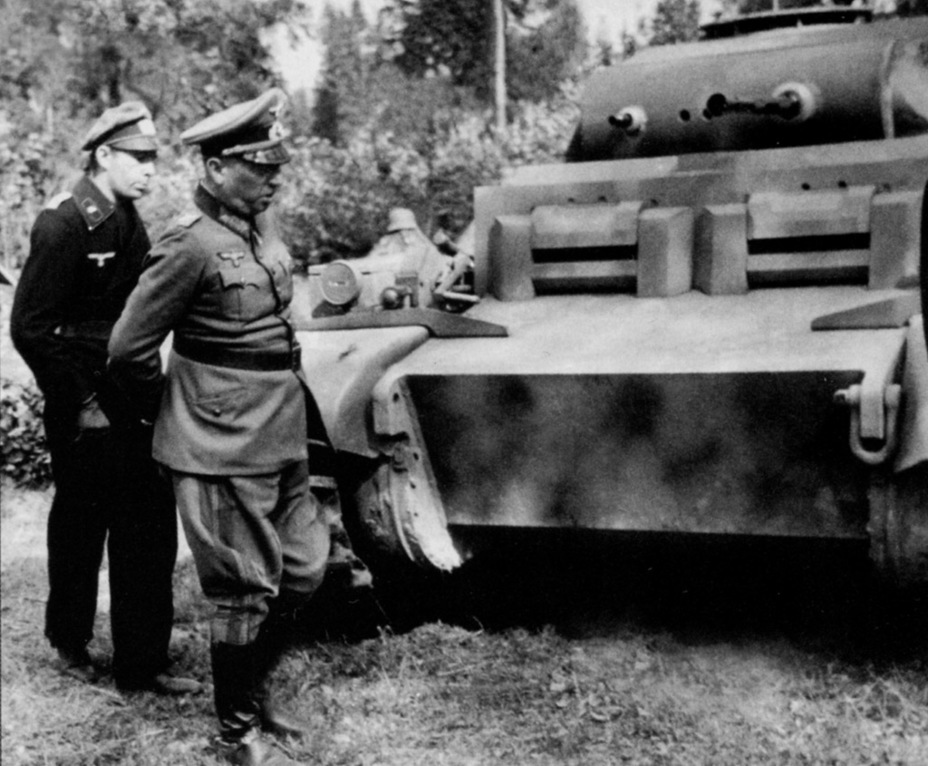Rather unusual types of vehicles frequently appeared in WWII. Most of them remained on paper, but some of them made it to production. German tank builders were no exception, creating vehicles whose mere concept boggles the mind. The VK 16.01, otherwise known as the Pz.Kpfw.II Ausf. J was one such vehicle. It was not as useless as its brother, the Pz.Kpfw.I Ausf. F, but the concept of a lightly armoured heavy tank raises many questions.
Autocannon versus fortifications
The situation in Europe began to rapidly heat up in 1938. The Anschluss happened in March, and then Germany began demanding territorial concessions from Czechoslovakia. War was in the air. The arms race, already in play since the mid-30s, accelerated. Despite a number of issues, Germany's tank industry was better prepared for war than its likely opponents'. The backbone of the German tank force was made up of light tanks, but production of medium tanks was slowly starting up. In parallel, work on prospective tanks began in 1937. Heinrich Kniepkamp was in charge of the overall project, which impacted the design specifics of the vehicles, especially the suspension.

One of the issues that the German army could run into in the upcoming war was a well prepared and deeply echeloned line of defense. These lines existed on the borders with France, Belgium, and Czechoslovakia. The first measure was to reclassify certain artillery as dual purpose. Primarily, this meant that the 88 mm Flak 18 AA gun would be equipped with armour piercing shells. The development of the Pz.Sfl.IVa with a 105 mm gun was also launched.
Colonel-General Walther von Brauchitsch, who took up the post of the Supreme Commander of the Land Forces, launched an assault tank program on November 24th, 1938. The way these vehicles were created was simple. The requirements for the La.S. (PzI), La.S.100 (PzII), and B.W. (PzIV) were taken as the foundation. Using the boundaries set by these vehicles, new tanks with powerful armour were created. These tanks had 80 mm of front armour, which protected them from the 50 mm Pak 38 gun.

Of these tanks, only the assault version of the B.W., the S.W., remained within the realm of sanity. The vehicle, later indexed VK 65.01, could at least combat light fortifications and support units that were assaulting enemy defenses. As for the lighter projects, they were rather puzzling. Nevertheless, it was these light tanks that were not only built in metal, but put into production. The light two-man tank, which was analogous to the PzI in its ability, was designed by the Krauss-Maffei company. The project, indexed VK 18.01, was in many ways based on the VK 6.01 light tank, which was also designed by this company. Work on the second project, which was inspired by the PzII concept, was done by MAN. In both cases, Daimler-Benz was responsible for the turret.
MAN's engineers also picked the evolutionary method when designing a new vehicle. Since June of 1938, a light tank that would later be indexed VK 9.01 was in development at this company. As with the VK 6.01, it was designed in close cooperation with Kniepkamp, so the VK 9.01 and VK 6.01 were very similar. This is not surprising, as Kniepkamp sought to rationalize the two designs. The same thing happened to this new project, indexed VK 16.01. The chassis was a further development of the VK 18.01 design. This was true for the hull, as well as the suspension. As a result, the 6th Department of the Armament Directorate decided to unify the two light tank projects. This happened on November 15th, 1939, when projects of both companies were demonstrated. Work on various components was split between them. Krauss-Maffei was tasked with designing the suspension. MAN was tasked with development of the drive sprockets, the final drives, and the main clutch.
The 150 hp Maybach HL 45 and 6-speed ZF SSG 47 gearbox were the same on both tanks. The hull of the VK 16.01 was similar to the hull of the VK 18.01, but wider, since the driver's compartment also needed to fit a radio operator in addition to the driver. As for the turret, Daimler-Benz did not attempt to reinvent the wheel. The design was similar to the VK 18.01's turret. The biggest difference, in addition to the thickened armour, was the removal of the slanted sides.
A mass produced mistake
According to plans accepted at a meeting on November 15th, 1939, 4 experimental chassis and then 30 pilot tanks would be built. Armour would be sourced from Krupp, and elements of the chassis were split between Krauss-Maffei and MAN. On January 4th, 1940 the pilot hull and turret production plan was worked out. According to the plan, the first 5 hulls would be built in September, 10 in October, and 15 in November. The first 5 turrets would be built in October, 10 in November, and 15 in December. Work on the hull of the VK 16.01 went quickly. By February 6th MAN had welded three experimental hulls from the parts it had received. As for complete vehicles, the first one was ready by June of 1940. A small delay happened with turrets due to a debate about the design, but blueprints were ready by mid-March. The experimental turrets had characteristic «cheeks» that covered the gun mantlet from the sides.

While the experimental chassis was being worked on, the military's appetites grew. According to plans dated April 25th, 1940, the first assembled VK 16.01s were due in December of 1940, and the last by March 1941. A batch of 100 would follow. In total, 700 tanks of this type would be ordered. At that same April 25th meeting the tank was referred to as PzII n.A. verst., «reinforced PzII new type». In addition, the idea of installing an 8-speed semiautomatic Maybach SRG 15319 gearbox and LRG 15319 turning mechanism into the VK 16.01 came up in June of 1940. The VK 18.01 would be modernized in the same way. The modernized tank would be indexed VK 16.02. This project remained until at least the spring of 1941, but was never built. The VK 16.02 index migrated to another tank.
There was another project that remained at the theoretical stage. It was proposed that 150 Pz.Kpfw. (Fla.W.) VK 16.01 (fl.) would be produced by April 1st, 1942. Overall, the production would total 192 units. This was a more rational idea for the VK 16.01 chassis, but it was rejected.

In practice, production was significantly different from plans. After assembly of the prototypes (only three of the four were ever built), activity regarding the VK 16.01 died down. It would be better for the military if this incomprehensible vehicle was cancelled, like the VK 65.01 was in October of 1940. Even theoretically, these tanks had no fortifications left to assault.
In part, the continuation of work on the VK 18.01 and 16.01 was a victory of bureaucracy. Based on the experience in the French campaign, the Germans came to the conclusion that designing tanks with a mass of over 30 tons was senseless. Since the VK 18.01 and VK 16.01 had a long way to go before they hit that mark, they passed through this sieve. However, someone up top managed to understand that these vehicles were not in demand. In the tank program for 1941, approved on May 30th, 1941, the VK 16.01 received the lowest priority. Tanks from the first series were planned no sooner than April 1st, 1943, and the last of the 230 ordered units was planned for April 1st, 1945.

These plans did not impact the deadlines of the pilot batch directly, but MAN was overloaded with work. Issues with subcontractors also influenced production. As of August 18th, 1941, not a single vehicle from the pilot batch had been delivered, even though the first three were planned for July. Krupp completed its tasks the fastest, delivering 30 batches of plates from May to November of 1941. The other subcontractors were not as fast. Only 8 tanks, named PzII Ausf. J, were built in 1941. The rest of the pilot tanks were built in tiny groups from April to December of 1942. The vehicles received serial numbers from 150201 to 150230. They differed from the prototypes by a different turret design, tracks with pitch reduced to 130 mm, and a new drive sprocket crown. As for the first production series, it was cancelled on July 1st, 1942.
From the swamps of Sinyavino to the forests of Belarus
The resulting vehicle, despite the pointless concept, was less useless than the VK 18.01, adopted into service as the PzII Ausf. F. As a weapon of war, the PzII Ausf. J was not as pointless. At least the 20 mm autocannon was more useful than the PzI Ausf. F's machineguns. In addition, the presence of a radio operator made the commander's job easier.
The tank was also more successful in terms of mobility. Naturally, it went past its 16 ton weight limit, but 17.4 tons was still a far cry from the PzI Ausf. F's 21. The average speed of the tank on roads was 23.4 kph, which was only slightly less than that of the PzII Ausf. F. The average speed off-road was 12.6 kph, not a lot, but acceptable for this kind of speciality vehicle. In addition, the tank successfully passed trials on snowy terrain. However, the point of the tank was not to assault snow banks.

The combat debut of the PzII Ausf. J should have been Operation Hercules, the landing of a German-Italian force in Malta. Five tanks were sent to southern Italy, where they were included in the 1st tank company of the 66th Special Purpose Tank Battalion. This unit also included 5 PzI Ausf. F tanks. The tanks were painted in tropical camouflage, but they never made it to Malta. Instead, they were sent to Mga station near Leningrad in late July.

As of August 13th, 1942, the 1st tank company of the 66th Special Purpose Tank Battalion possessed 7 PzI Ausf. F tanks, 7 PzII Ausf. J tanks, and 14 PzIV tanks. The battalion was attached to the 29th Tank Regiment of the 12th Tank Division. The Sinyavino offensive, which became the debut of the PzII Ausf. J, began shortly after. The region was not suitable for tanks designed to assault enemy fortifications. Instead, they had to assault swampy ground. Two tanks became bogged down during an attack on September 10th, and only dislodged by mid-October. Ober-Lieutenant Betke, the commander of the 1st company, was even less lucky. He was fatally wounded in that battle.
Bad luck carried on. Two more tanks were lost in the second half of September. One of them was stuck in a swamp, the other knocked out. All knocked out and bogged down tanks were evacuated by the start of November, but two of them were damaged to such a degree that they were sent to Germany for repairs. The remaining tanks did not distinguish themselves in terms of reliability. Only one vehicle of the five was functional, and it broke down by the end of December.

10 more PzII Ausf. J tanks arrived on December 27th. The 12th Tank Division managed to gather half of all tanks of this type. Two tanks were written off fairly quickly, and the remainder were not all that reliable either. 5-7 tanks were combat ready at any given time. Tanks that could no longer be maintained in working order were sent back to Germany or written off starting in April. By the time the 1st company was redesignated the 8th company of the 29th Tank Regiment it only had 6 PzII Ausf. J tanks remaining. The vehicles were redistributed among other companies of the regiment, but they did not do well here. The vehicles were sent to the 559th Repair Battalion in July. That was the end of the service of the PzII Ausf. J in the 12th Tank Division.

By April of 1943 it became clear that the PzII Ausf. J was no good as a combat unit. The most reasonable course of action was to send these tanks to auxiliary units, the «punishment squads». The first such unit was the 13th Special Purpose Police Company, formed on January 6th, 1943 in France. It was assigned to the 14th SS Police Regiment and received 6 tanks of this type. The company was located in Yugoslavia starting with July of 1943. By the fall it still had four tanks of this type remaining.

Another six tanks ended up in the 221st Tank Company, which was the second unit to have the PzI Ausf. F and PzII Ausf. J at the same time. These vehicles were used against partisans in Belarus. As of March 11th, 1944, five PzII Ausf. J tanks remained with the company, but only three were combat capable. These vehicles survived until the summer of 1944. At least one was knocked out during the liberation of Slutsk, but Soviet trophy teams paid no attention to it. The last unit to use this tank in its original form was the 350th Security Tank Company. It had four of these tanks as of November 1944. Another tank, one that was repaired earlier, ended up in France. There, it was converted to an engineering tank, with a crane instead of the turret. This tank was used in the 116th Tank Division and was captured by the Allies.

The PzII Ausf. J is an example of what happens when a nonsensical task is given. It's hard to say that MAN built a bad tank. However, the military should be careful of what it wishes for. As with the PzII Ausf. J, the number of vague tactical requirement for the vehicle was off the charts.
Translated by Peter Samsonov. Read more interesting tank articles on his blog Tank Archives.
Sources:
- Panzer Tracts No.1–2 Panzerkampfwagen 1 (Kl.Pz.Bef.Wg. to VK 18.01), Thomas L. Jentz, Hilary Louis Doyle, Darlington Publication, 2002, ISBN 0–9708407–8–0;
- Panzer Tracts No. 2–2 — Panzerkampwagen II Ausf.G, H, J, L, and M development and production from 1938 to 1943, Thomas L. Jentz, Hilary Louis Doyle, 2007, ISBN 0–9771643–8–1;
- National Archives and Records Administration;
- Russian State Archive of Film and Photo Documents;
- Author's photo archive.






